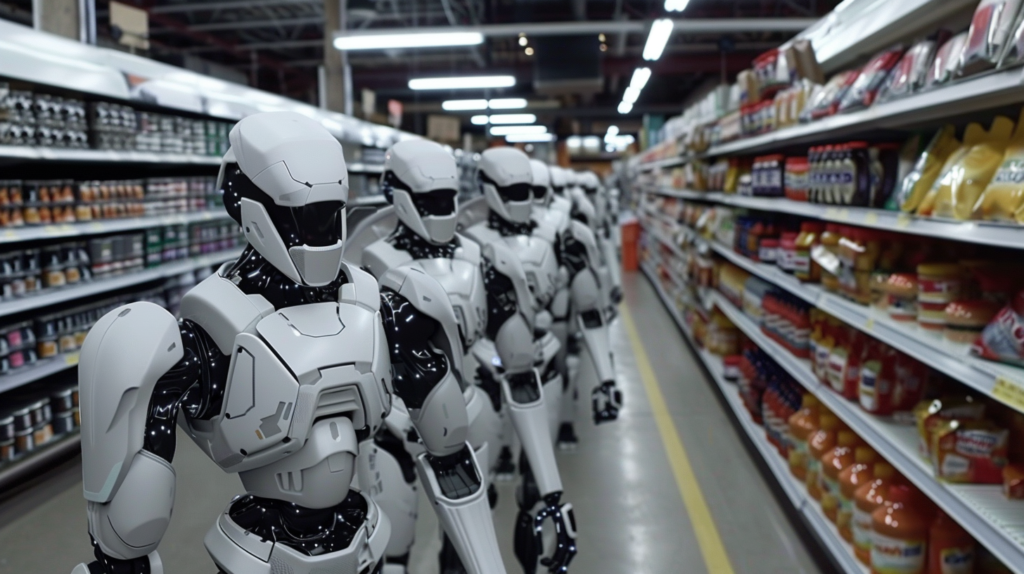Let’s be honest. Grocery shopping isn’t exactly the most exciting activity. Most of us just want to be in and out of the shop as soon as possible.
In such instances, people make grocery lists. These lists give us a goal and an aim. We must buy “XYC” and then leave the shop – immediately.
However, this never happens, as grocery lists take too long to think about and write. As a result, we spend hours in a grocery store picking up junk food, spending over our budgets, and, generally, buying goods we don’t need.
But what if this time and effort was shortened? What if there was a way to create a grocery list specifically for you, your family, and everybody’s different diet? Well, with AI grocery lists, there is.
4 Ways an AI Grocery List is Changing Shopping
Ever wondered how AI can make your grocery shopping easier and smarter? Find out how an AI grocery list can help you save money, eat healthier, add variety to your meals, and stick to dietary needs.

Cost-effective Shopping
We can all agree on one thing – shopping prices have increased recently.
And it’s very true. The Federal Reserve suggests grocery prices from January 2020 to December 2023 have risen by 24.65%. Because of this, saving a little on shopping has never been so important.
With AI shopping lists, this is very possible. You can do this by using a prompt like the following:
“I have a family of [family size]. One family member needs [dietary requirements] while another needs [dietary requirements]. We have a budget of [budget amount] and want a well-rounded diet for [number of meals per day]. Create a cost-effective shopping list.”
Using this prompt with an AI tool, like Fello AI, will present a shopping list that suits your family, their dietary requirements, your budget, and your number of meals per day.
Healthier Choices
According to Statista, about half of America eats healthy. For the ones that don’t, they think:
- It’s too expensive.
- It takes too long to cook/prepare.
- They don’t have the knowledge to eat healthy.
Well, an AI grocery list can combat two of these. Unfortunately, it can’t cook or prepare it for you (maybe in the future).
You can input your dietary requirements, for instance, protein, carbohydrate, fat, and daily intake goals, and it’ll create a shopping list that represents that. You can even use this shopping list information to create an AI meal plan.
Improved Variety
Healthy food is commonly called “flavorless” or “boring.” And it can be. You can only eat plain chicken, rice, and broccoli a few times until you get bored. However, healthy eating doesn’t need to be boring if you have some variety.
An AI grocery list can help with this. It can help bring new foods into your diet that still fulfill your dietary requirements. This makes healthy eating much more accessible and much, much less boring.
And perhaps you’re not even on a diet but want to try a new dish one evening. That’s fine. You can just ask AI to suggest new dishes, give you the ingredients, and then add the ingredients to your grocery list.
Dietary Compliance
Lastly, for those with health problems, such as lactose intolerance, it can help you avoid lactose-heavy foods. Plus, going back to the improved variety benefit above, it can give people with such diets more variety.
AI shopping lists can also help with avoiding allergic reactions caused by food. More people than ever have food allergies in America, 33 million to be exact. And these reactions are only getting worse.
Grocery lists powered by AI can help identify foods that don’t cause these reactions. For example, let’s say you throw a birthday party, and a family member is allergic to peanuts. You can prompt this to AI so they can give you a grocery list for a party without peanuts or peanut-based products.
Benefits of AI Grocery Lists
After reading the use cases above, it’s clear to understand the advantages AI grocery lists bring. These include:
- Health: Generate grocery lists that are health-focused, based on your dietary requirements.
- Safety: Remove any foods you or someone in your household is allergic to.
- Enjoyment: Get more variety in your grocery lists to create a more enjoyable diet.
- Cost-Efficiency: Produce grocery lists based on your dietary requirements, family size, and budget.

Conclusion
As you can see, the use of AI grocery lists is superb. It can help you save money, be healthier, avoid problematic foods, and, as an added plus, increase your variety.
It’s a win-win situation for everyone. You get more affordable grocery shops, your family gets healthier, more enjoyable food, and lower the risks of allergic reactions.
And what’s better? Mostly, all AI that can be used as AI grocery lists, such as Fello AI, have free plans. These free plans are more than enough to generate a grocery list in the ways we’ve explained above.







